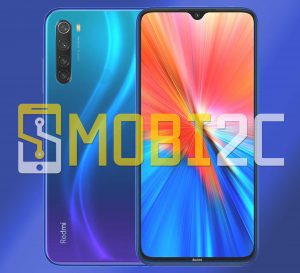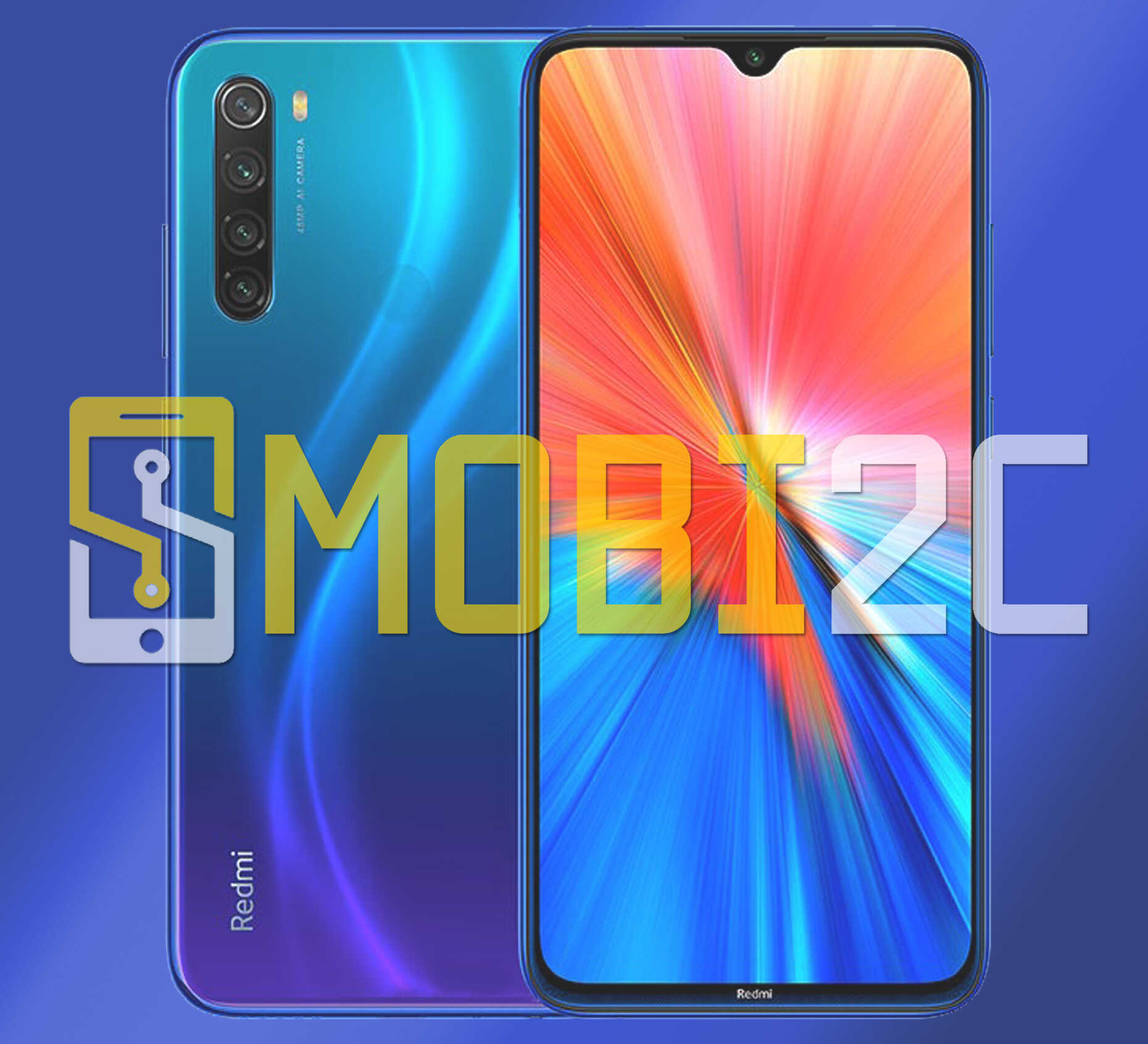Xiaomi Redmi Note 8 review 2021
Phone Design

The (2021) Note 8 is one amongst the phones that’s easy to hold and use, as its thickness doesn’t exceed 8.4 mm, and it weighs only about 190 grams, and thus it is considered an acceptable device for the owners of small hands.
Both the front and back of this phone are covered with Corning Gorilla Glass 5 protection, while these two fronts have a plastic frame, in order that the form of this frame matches the worth range of the phone.
Although the protection standards for this phone are secured by Gorilla Glass 5, its coverage of the phone screen, cameras, and therefore the back cover generally will make them more liable to fingerprints, especially when coping with the space black phone model.
This phone has rounded edges, and a front camera within the kind of atiny low visit the center of the highest fringe of the screen, and this camera appears clearly within the phone even when the screen is turned off because of the dark color of this hole, but it’s not important in practical life, as we may notice the presence of the LED flash near From the rear cameras, it’s not visible to the current extent, while the Redmi logo appears noticeably on the lower fringe of the side and appears mirrored below the backend.
The camera frame protrudes slightly from the phone’s back interface, and this ends up in problems with the balance of the phone on surfaces when utilized in isolation from the protection, and speaking of cameras, the Note 8 (2021) phone contains four cameras placed within a longitudinal frame, near the fingerprint sensor that the rear cover of this phone is mediated, and despite the little size of this sensor, it works quickly and smoothly.
Finally, the phone (2021) Note 8 incorporates a power button et al to manage the amount on its right side, while its left side is occupied by a slot for 2 SIM cards and an SD expansion card, and also the bottom fringe of the phone includes both the headphone jack and also the USB-C charging port, and therefore the small slots for speakers Mono audio within the phone, and therefore the upper fringe of the phone remains the infrared port.
Screen resolution and display quality
Xiaomi has provided its average phone (2021) Note 8 with a 6.3-inch IPS screen, and it works with a resolution of 1080 x 2340 pixels, and this screen occupies a ratio of 19.5: 9 of the structure of the phone, which implies that it contains 409 pixels per inch.
Looking at the IPS display technology, we are able to deduce a number of its distinctive factors, like the acceptable viewing angles for using the phone throughout the day, and Xiaomi provided it with three contrast modes, including automatic mode, saturated color mode and standard colors still, additionally to the mode of hot, cold, default and warm colors, likewise because the mode Customizable in keeping with user preferences, setting the quality contrast mode and warm colors may end in the contents appearing at their best on the phone screen.
It was also not without some additional options for the phone screen settings, like the custom brightness mode that’s turned on when the automated brightness mode is turned off, and this mode sets the acceptable brightness in step with the proportion of the encircling light on the phone.
Night mode and reading mode also come to complete the list of useful features that Xiaomi has introduced for this upgraded version.
Finally, it is said that the brightness of the phone screen by default is sufficient to use the phone in daylight, and activating the utmost brightness should show the whole contents of the screen clearly to users, but the descent of sunlight on the phone will often result in the looks of fingerprints on the phone body.
Phone Battery (2021) Note 8
The power tests of this phone showed that it can still work for roughly 6 hours of continuous play, and this may touch 8 hours of permanent screen operation, because the battery capacity reached 4000 mAh, and also the charging power supports 18 watts, so the phone is fully charged in but two hours.
The Efficiency of the Phone in Terms of Performance and Standards
The phone (2021) Note 8 was powered by the MediaTek Helio G85 processor, which was manufactured in step with 12 nano technology, and these chipsets have two Cortex-A75 cores operating at a frequency of two.0 GHz, and 6 other Cortex-A55 cores, at a frequency of 1.8 GHz.
These chipsets have outperformed their predecessor MediaTek Helio G80 in terms of frequency and core speed, which portends a much better performance for the Note 8 (2021) phone compared to its Xiaomi Redmi 9 counterpart, especially when it involves light games.
These chipsets also are integrated with the Mali-G52 MC2 graphics unit, which supports the look languages OpenGL ES 3.2, OpenCL 2.0 FP and Vulkan 1.0, which suggests that it’s compatible with popular games like Asphalt 9, and pushes frames at a rate between 20 and 40 frames per second. When Game Turbo mode is enabled.
What happens sometimes could be a sudden call in the quantity of frames during gameplay, and this could affect the complete gaming experience, and it may also be said that (2021) Note 8 isn’t suitable for intense games in the slightest degree.
The phone chipset (2021) Note 8 was attached to the eMMC 5.1 permanent storage memory with a capacity of 64 GB, and 4 GB of random access memory LPDDR4X, and it should be noted here the results shown by the capacity tests, which stated that the write speed on the volumes doesn’t exceed 105 MB per second, While the reading speed of it’s 305 megabytes per second.
Phone Camera
The phone (2021) Note 8 includes a main camera that carries the 48-megapixel Samsung GM1 sensor, and therefore the size is 0.8 micro-pixels. this is often what gives the photographs more details, and it’s also possible to activate the 48-megapixel full-resolution mode for this camera, although this can not add terms of colours given its vividness in 12-megapixel images and also the low color quality during this case. While the detail increases and therefore the image keeps noise levels within an inexpensive range.
As for the ultra-wide camera, it works with an 8-megapixel camera, and also the lens aperture is f/2.2, therefore the rear cameras are set with a macro optical lens and a depth sensor, both of which take pictures from the f/2.4 aperture.
The ultra-wide lens certainly won’t be pretty much as good because the main camera, as its shots are going to be somewhat usable, despite the noise levels spread throughout the image, muted details within the background, and limited amount of dynamic range.
The HDR mode contributes to increasing the amount of details within the shady areas of the image, and it also smooths and raises the brightness levels within the image when necessary, while it might be better to undertake shooting first without activating this mode then resorting to that when the standard of details within the areas answerable for it deteriorates.
The panorama mode also works well, looking on the scene, because it resolves the difficulty of detail somewhat, and reproduces the colours for a few images, but the colours will fade within the shady areas of the image.
In fact, we cannot attribute the amazing work of the night mode during this phone, because it gives the pictures an appropriate amount of detail, but this can be at the expense of quality and increase the amplitude within the image, and this sort of image may take approximately two seconds to complete the storage stage within the phone memory, and for this We must continue the steady hands and therefore the target until this era has passed after the instant of capture.
The Macro camera offers us quite little bit of detail and a lucid amount of smoothness likewise, but its use in photography should be limited to accomplishing the task of zoom without specializing in the remainder of the factors.
On the opposite hand, the 13-megapixel selfie camera works to supply good shots when the encircling environment is lit, while the standard will inevitably decrease with the decrease in lighting, although it’s still suitable for sharing on social networking sites.
Finally, the Note 8 (2021) phone cameras are limited to recording clips in 1080p resolution, with 30 frames per second secured, although its predecessor model was providing 4K recording features with 30 frames per second and so raise this rate to 60 frames per second. When shooting at a lower resolution of 1080 pixels, this shortcoming in performance is thanks to the MediaTek Helio G85 processing chipset, which has proven its inability to supply 60 frames per second, no matter the imaging resolution.
We can’t call the videos of this phone really special, as about half the small print are gone, and therefore the colors are a small amount faded, although the noise isn’t that top.
Operating system and software hardware within the phone
Xiaomi sought to enhance the overall use experience of its developed phone (2021) Note 8, by providing it with the most recent MIUI 12.5 operating interface, which relies on the Android 11 system, and may be a feature-rich interface because it gives users the chance to customize the phone with an oversized number of daily settings, which include Practically, the dark mode is at the system level, so this mode displays the contents of the phone more appropriately when using it in a very dark environment, or if we like better to use applications in keeping with this mode to avoid wasting battery power from running out.
As for Game Turbo mode, it frees up additional system resources for the advantage of games, and this may certainly observe the desired frames within the game and begin some applications with none delay.
The video toolbox also includes some features that allow users to show off the phone screen when watching YouTube clips, so only the audio of the content appears without its image.
Audio Setting Details
(2021) Note 8 contains mono speakers corresponding to the value range of the phone, while this might be at the expense of the sound levels it provides, because it will in fact not come at high rates of sound to beat the noise outside the house, but it still makes up for it with complete clarity and serenity within the output sound.
Conclusion
Xiaomi excelled in developing its old Note 8 model and turning it into an innovation that contains the foremost sought-after specifications, like smooth display, good performance for various tasks, a long-lasting battery even within the most difficult conditions of use, and also the practice of the foremost intensive tasks on the phone, while this is often matched by the limited performance of cameras. , and heavy games so as to take care of its price point of $ 170, although it complies with most standards of durability and protection, and offers its users a smooth experience of use with the most recent interface MIUI 12.5.
